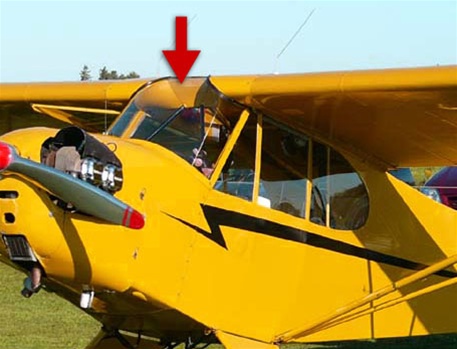James331
Ejection Handle Pulled
- Joined
- Apr 18, 2014
- Messages
- 20,309
- Display Name
Display name:
James331
I'd be curious to know the SAR times on airplanes with 406b's.
With the CAP? maybe before rigor sets in?
I'd be curious to know the SAR times on airplanes with 406b's.
I'm looking at the beginnings of my 52nd winter in Alaska. Lots of good memories and looking forward to more.Ok. When I spoke about cold weather, I was talking about the Smokies. You are talking about the Rockies. I don't think I would ever attempt to start or fly in that weather.
With the CAP? maybe before rigor sets in?
In Alaska pilots generally dress like they'll be walking home. Depending on a heater is a recipe for pain.With the CAP? maybe before rigor sets in?
In Alaska pilots generally dress like they'll be walking home. Depending on a heater is a recipe for pain.
As to 406 rescue? It depends where you live. In Alaska the Air Guard sends C-130s with parajumpers or Pave hawks, depending on the situation. CAP isn't the first responder.
Wow. You managed to work your anti-government politics into a thread on engine preheating. Quite some mental gymnastics there.The US needs more Alaska and less NYC/CA
Wow. You managed to work your anti-government politics into a thread on engine preheating. Quite some mental gymnastics there.
Anyone use RV antifreeze as a defrosting agent?
had to use it on my hangar door pins....they would collect water and freeze....locking the pins and preventing the door from opening.Anyone use RV antifreeze as a defrosting agent?
Anyone use RV antifreeze as a defrosting agent?
I use a metal garden sprayer with RV anti freeze. The key to making it work is getting it warm so I put the metal tank on the stove for a few minutes. Works great. Stays warm for quite a while so driving to the plane is no big deal. No pink stains like you'll hear about from guys who've never used it.
I swear by pulling the prop through, in the opposite direction of normal rotation for a cold start. I have never had it fail to start when I did that. But I have only had to do it when visiting up north. It never gets that cold in Daytona and besides, when I'm home, it is in a hangar.
Now HOT starts, they give me the willies.
While pulling my prop through backward on my right engine, I get a strange 'geared' sound that the left one does not make. I am thinking this is a vacuum pump.
Anyway, I don't like the sound, so it doesn't get pulled backward.
Because that is what the POH says. (At least that's the way I read it. Correct me if I'm wrong)Why backwards? Seems bad on a vacuum pump?
ENGINE
Use engine oil in accordance with Consumable Materials in the HANDLING, SERVICING AND MAINTENANCE Section.
WARNING
Ascertain that magneto switch and battery master switch are off before moving propeller by hand.
Always pull the propeller through by hand, opposite the direction of rotation, several times to clear the engine and "limber up" the cold, heavy oil before using the starter. This will also lessen the load on the battery if external power is not used.
January 1982 4-19
From my post on page 1!
Anyone use RV antifreeze as a defrosting agent?
I tried it, and I think t left stains in the paint. It looked like acid rain type marks, paint still had shine but I think that stuff did something. However, the RV waterline antifreeze (the pink stuff) did an excellent job removing frost.
Of course dragging metal parts across each other sans oil would be bad, but I think doing it at high, starting speeds would be worse. But in answer to your question, I don't know how it limbers up the oil. But between the POH and POA, I'll take the POH (almost) every time. Of course though, my POH is 51 yrs old and the physics may have changed since then.What is the physics involved in the recommendation to pull the prop through? IOW, by what mechanism does it make the oil “limber up”?
I did not see that recommendation in the Continental document quoted above. I think dragging metal parts over one another in the absence of oil pressure is generally frowned upon, leading to the recommendation to just start the darn thing.
Of course though, my POH is 51 yrs old and the physics may have changed since then.

My only guess would be to overcome the static friction that has persisted. The longer two similar materials sit touching one another in a close proximity, the more molecular interaction they will have (See Cold Welding). Perhaps pulling the prop through breaks this and allows for a smaller coefficient of static friction when initially starting? If this were the case you wouldn't have to "pull the prop through" as much as just move it a smidge.What is the physics involved in the recommendation to pull the prop through? IOW, by what mechanism does it make the oil “limber up”?
My only guess would be to overcome the static friction that has persisted...If this were the case you wouldn't have to "pull the prop through" as much as just move it a smidge.
Here’s an idea. Move someplace cold and park outside. Learn a little about what you’re talking about. Continental says there’s no need to preheat above 20*F. On a 20- something day go crank the motor to life and pay attention to how it works. The next day try it again after pulling the prop through a few times. There’s no question the starter will spin the engine faster after pulling it through, and there’s no question that the engine will fire off better with a faster rotation speed. The bottom line is I want to maximize the chances the engine will start the first time I turn the key. Pulling it through is a no-brainer. If you’ve had time to do a thorough preheat it makes no difference, but there are lots of times preheating in marginal temps isn’t practical.
What does it do? I suspect it scrapes down thick oil and frost on the cylinder walls and clears the path for the pistons and rings. What guys who actually do it will notice is how rigid the prop is on the first half revolution and how the effort reduces the more you pull it through. Start a big bore engine using a battery the sixe of a box of Pop Tarts for a few winters and you’ll learn what works!
Another good trick in borderline starting temps is to prime it first and then pull it through. Free it up and distribute your prime at the same time. Maybe hand prop your engine for a winter to test that one out.
I simply do not believe this. If it were true it would apply to auto engines too but these are started all the time without preheat at much lower temps (because MOGAS vaporizes much better in winter) . The lubrication systems are the same. An oil pressure is NOT required for lubrication. Are you aware that Chevrolet 6 engines had NO oil pressure to the rods in to the 1940s? I start my airport car with 15-40 oil many times at ten below.Thick oil surely does keep the metal surfaces apart, up until the engine starts and runs and isn't getting oil into the galleries because it's too thick to be sucked up the oil pickup tube into the pump. I've seen engines damaged that way.
Generalizations can bite.
Myth. If you rotate the prop backwards and your vacuum fails because of it, than it was already about to go bad anyway. Mags don’t fire going backward, so rotating the prop opposite to its direction of rotation is the safest way to move the prop by hand for storage or what not.Why backwards? Seems bad on a vacuum pump?
So what do you think about the fact that the colder the temp is, the smaller the clearance between the bearing shells and the crankshaft are? If there’s not enough clearance, then there’s no room for the oil, regardless how high the oil pressure reads. The chances of metal to metal contact are much higher at this point. Go out and try to rotate the prop in cold weather and you’ll notice how hard it is to do. It’s obviously not because of running thick oil, (if you’re using a multi-grade), it’s because that clearance between the crankshaft and bearings are tighter than normal.Engine damage from cold WX starting down to around zero F is pure BS. I have started repeatedly in the high Rockies at temps a little above zero with no engine damage. Since I major my own engines I would have seen any such damage; there was none. Porsche 911s are aircooled engines very similar to aircraft engines and Porsche says nothing about a need to preheat. The main winter problem is getting the low vapor pressure AVGAS to fire without frosting the plugs. Thick oil is MORE protective of surfaces. Worry about high temps not cold temps.
Is this true? I thought heat expanded while cold temps resulted in shrinkage.So what do you think about the fact that the colder the temp is, the smaller the clearance between the bearing shells and the crankshaft are? If there’s not enough clearance, then there’s no room for the oil, regardless how high the oil pressure reads. The chances of metal to metal contact are much higher at this point. Go out and try to rotate the prop in cold weather and you’ll notice how hard it is to do. It’s obviously not because of running thick oil, (if you’re using a multi-grade), it’s because that clearance between the crankshaft and bearings are tighter than normal.
View attachment 79568
Cub Crafters is gonna be angry when they catch whoever stole their very special lightning bolt.

Is this true? I thought heat expanded while cold temps resulted in shrinkage.
Cold weather does result in shrinkage, that’s the point.Is this true? I thought heat expanded while cold temps resulted in shrinkage.
I simply do not believe this. If it were true it would apply to auto engines too but these are started all the time without preheat at much lower temps (because MOGAS vaporizes much better in winter) . The lubrication systems are the same. An oil pressure is NOT required for lubrication. Are you aware that Chevrolet 6 engines had NO oil pressure to the rods in to the 1940s? I start my airport car with 15-40 oil many times at ten below.
